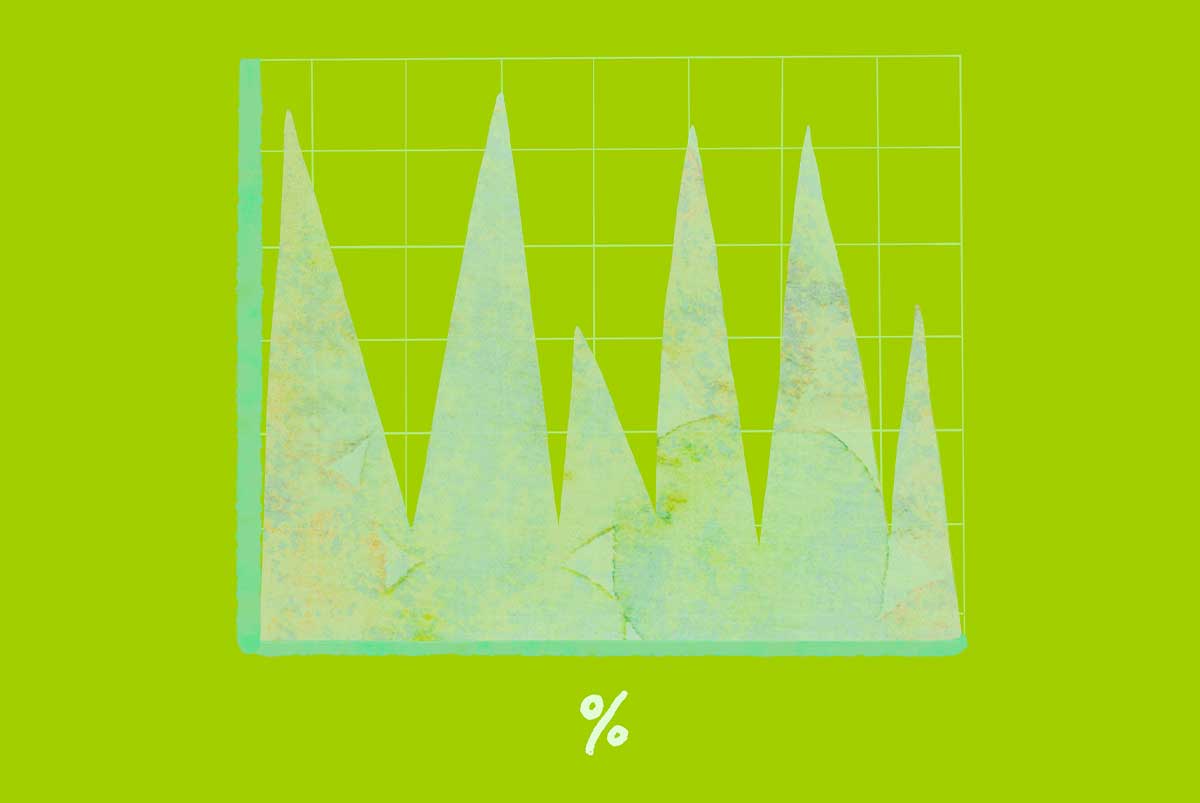If you want to unlock maximized investment returns on your bank account and other financial vehicles, understanding APY is vital. This powerful metric allows investors to compare opportunities and assess long-term growth potential. By calculating APY, you can make informed decisions about allocating your funds and watch your profits soar. Here’s a guide to the APY formula, the factors influencing it and expert tips for finding the best rates.
What Is APY?
Annual Percentage Yield (APY) measures the interest rate a savings account earns over a year when the interest compounds. The formula for APY is valuable to investors making decisions on which investments will yield the highest returns. Common financial products featuring APYs are savings accounts, money market accounts and certificates of deposit (CDs).
Understanding a financial product’s APY is vital for investing because you can accurately compare the returns on various opportunities and make informed decisions about allocating your funds. In addition, APY helps investors evaluate the potential growth of their investments over an extended period. By considering the APY, investors can assess the long-term impact of compounding interest and determine whether an investment aligns with their financial goals.
How Does APY Work?
When you deposit money in an interest-bearing account – such as a savings account, money market account, CD and some checking accounts – you expect that money to grow due to the interest these accounts earn.
APY shows how much money your account will earn from its interest rate and how often compounding occurs during the year. More frequent compounding equals more interest payments and faster growth. For example, a 3% interest rate that compounds monthly provides an increase 12 times per year. On the other hand, some accounts compound annually, meaning you only receive an interest payment once every 12 months. Therefore, accounts that pay interest more often will generate more profit.
Additionally, APY can be variable or fixed depending on the financial institution and the specific account type. A fixed APY means the interest rate is constant, while a variable APY’s interest rate rises and falls according to how the Federal Reserve periodically adjusts interest rates.
Remember, banks can pay interest whenever they want and generally choose between annual, quarterly, monthly and daily compounding structures. As a result, considering the APY instead of the interest rate can help you determine the profitability of a specific bank product. Both the interest rate and compounding schedule affect how much money you’ll receive.
How To Calculate APY
Here’s how to calculate APY:
APY = (1 + r ⁄ n)n – 1
Where:
- r: interest rate expressed as a decimal number
- n: number of compounding periods
APY formula example
Say you’re considering a savings account with a listed interest rate of 2.5% that compounds once every month, or 12 times a year.
The APY formula for the savings account looks like this: APY = (1 + 0.025 / 12)12 – 1. When converting the interest rate of 2.5% to a decimal, it comes out to 0.025. The 12 in this equation is the number of times a year that interest on this account compounds.
To begin calculating the APY, the parentheses come first: APY = (1.00208333)12 – 1
Then, the exponent: (1.02528842) – 1
Finally, the subtraction: (1.02528842) – 1 = 0.02528842
After running these numbers through the formula, you get an APY of 0.02528, or 2.528%.
You can then determine how much this APY will earn you during a year. To do this, you’ll need a new formula that includes the principal amount you have in your account.
The formula for determining how much you’ll earn with a particular APY is: (APY X principal) + principal = total earnings after a year.
In our example, let’s say you have a $100,000 principal balance in your savings account, and the APY is 2.528%. Plugging those numbers into the formula looks like this:
(0.02528 X 100,000) + 100,000
Again, calculate what’s in the parentheses first, then the rest: (2,528) + 100,000 = $102,528
Therefore, your APY would provide a $2,528 profit, resulting in a new account total of $102,528. Then, if you left the new principal untouched, this higher balance would create a larger return in the next compounding cycle.
Factors That Affect APY
Several factors influence APY. Becoming a savvy investor means understanding how they work together to produce an annualized return.
Interest rate
The interest rate represents the percentage at which your deposited funds earn interest over a specific period. In other words, a higher interest rate means a higher APY. So when the interest rate increases, the account generates more interest income, resulting in a greater yield on your investment.
Compounding frequency
Next, APY calculations use compound interest to further the benefit of a high interest rate. The bank adds the interest your account earned in the previous period to your balance, meaning the interest rate is calculated using the new, larger total.
For example, a 5% interest rate on a balance of $100,000 is 100,000 X 0.05 = $5,000, creating a new balance of $105,000 when it compounds. The next compounding cycle calculates interest based on the $105,000. So your next interest payment is 105,000 X 0.05 = $5,250, a $250 increase from the first period. Therefore, your money experiences a snowball effect due to compounding.
Fees
Financial institutions can charge various fees, such as maintenance or transaction fees, that reduce the overall APY of a bank account. These fees are subtracted from the interest earned or the account balance, reducing the effective investment yield. It’s essential to consider the impact of fees when calculating the actual APY of an account because they can diminish your overall returns. Therefore, it’s advisable to review fees when comparing account options and choose ones with lower fees to maximize profits.
How To Find the Best APY
To find a good APY for an account, consider the following steps:
1. Research financial institutions. Look for reputable banks and credit unions offering savings accounts or other accounts with competitive APYs.
2. Compare APYs among different products. Once you’ve identified potential financial institutions, compare the APYs their accounts offer. Check their websites, contact customer service representatives or use online comparison tools to gather information about the APYs available for various account options.
Note: Economic trends have increased interest rates over the past few years. As a result, it’s realistic to look for a high-yield savings account of 4%. If you have tens of thousands of dollars for a higher minimum balance, you can find accounts with even higher rates. Likewise, you can find CDs with rates between 2% and 5%. Remember that short maturation periods mean lower APYs, while leaving your money in the account for longer periods (such as 5 years) will earn higher returns.
3. Assess the account terms and conditions. In addition to APY, consider the terms and conditions associated with the account. Take note of minimum deposit requirements, fees, withdrawal restrictions and any other relevant factors. These can impact the overall value and suitability of the account. For example, a high-yield savings account may have a minimum required balance of $25,000, while a CD might take $1,000 to get started.
APY vs. APR: What’s the Difference?
While they share similarities, Annual Percentage Rate (APR) and APY are different. APY illustrates how much you’ll earn from a savings account or other investment. APR tells you how much you’ll pay when borrowing money.
For instance, when dealing with credit cards, student loans, mortgages or car loans, lenders assign a specific APR, which encompasses the annualized interest and fees. These include loan origination fees, prepayment penalties and other costs associated with the lender. Therefore, APR accurately represents how expensive a loan is. The lower your loan’s APR, the less you’ll pay for borrowing. Contrastingly, the lower your APY, the less you’ll make in interest.
APRs can also be fixed or variable. For instance, mortgages usually have fixed rates, though adjustable-rate mortgages (ARMs) are available. In addition, credit cards typically have variable APRs that fluctuate with a benchmark rate, such as the Prime Rate, which banks use for setting interest rates.
While banks set APY by account type, they assign APRs to individual borrowers after evaluating your credit score, debt-to-income (DTI) ratio and other financial circumstances.
Annual percentage yield (APY) FAQs
Accounts can have either a fixed or variable APY. A fixed APY, as the name suggests, doesn’t change. Meanwhile, a variable APY changes over time based on benchmark interest rates, like the ones the Federal Reserve sets. Most checking, savings and money market accounts come with variable APYs.
The Federal Deposit Insurance Corporation (FDIC) reports current rates for conventional savings accounts to be an average of 0.40% nationwide. However, you can find higher rates with online banks and different account types.
APY informs investors by enabling them to compare investment opportunities and assess relative profitability. It also helps you evaluate long-term growth potential by factoring in compounding effects. By providing transparency and standardized information, APY facilitates informed decision-making across investment types.
Let APY Work for You
Understanding APY is crucial for investors because it allows for accurate comparison of investment returns and informed decision-making for fund allocation. APY reflects both the interest rate and compounding frequency, enabling investors to evaluate long-term growth potential and assess the risk-reward tradeoff of different investment opportunities. It’s important to consider the impact of fees on the overall APY, as they can diminish returns. To find a good APY, research reputable financial institutions, compare APYs among different accounts and consider the terms and conditions associated with the account. Remember that APR and APY are distinct, with APR representing the cost of borrowing money and APY reflecting the earnings from an investment. By understanding these concepts and factors, investors can make more informed financial decisions and maximize their returns.
The Short Version
- Annual Percentage Yield (APY) measures the interest rate a savings account earns over a year when the interest compounds
- APY helps investors evaluate the potential growth of their investments over an extended period
- An investment’s APY can be variable or fixed depending on the financial institution and the specific account type




